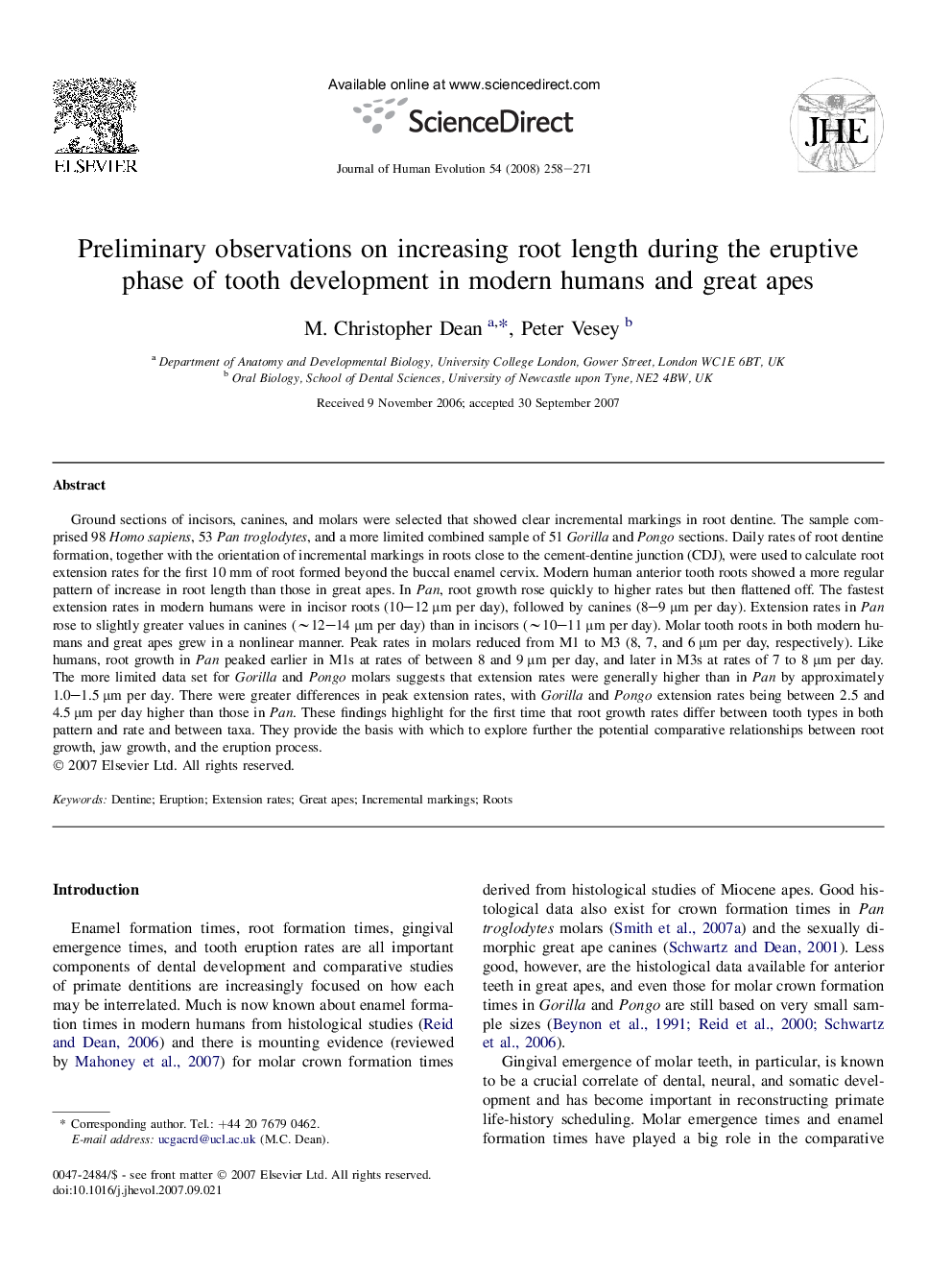| Article ID | Journal | Published Year | Pages | File Type |
|---|---|---|---|---|
| 4557286 | Journal of Human Evolution | 2008 | 14 Pages |
Ground sections of incisors, canines, and molars were selected that showed clear incremental markings in root dentine. The sample comprised 98 Homo sapiens, 53 Pan troglodytes, and a more limited combined sample of 51 Gorilla and Pongo sections. Daily rates of root dentine formation, together with the orientation of incremental markings in roots close to the cement-dentine junction (CDJ), were used to calculate root extension rates for the first 10 mm of root formed beyond the buccal enamel cervix. Modern human anterior tooth roots showed a more regular pattern of increase in root length than those in great apes. In Pan, root growth rose quickly to higher rates but then flattened off. The fastest extension rates in modern humans were in incisor roots (10–12 μm per day), followed by canines (8–9 μm per day). Extension rates in Pan rose to slightly greater values in canines (∼12–14 μm per day) than in incisors (∼10–11 μm per day). Molar tooth roots in both modern humans and great apes grew in a nonlinear manner. Peak rates in molars reduced from M1 to M3 (8, 7, and 6 μm per day, respectively). Like humans, root growth in Pan peaked earlier in M1s at rates of between 8 and 9 μm per day, and later in M3s at rates of 7 to 8 μm per day. The more limited data set for Gorilla and Pongo molars suggests that extension rates were generally higher than in Pan by approximately 1.0–1.5 μm per day. There were greater differences in peak extension rates, with Gorilla and Pongo extension rates being between 2.5 and 4.5 μm per day higher than those in Pan. These findings highlight for the first time that root growth rates differ between tooth types in both pattern and rate and between taxa. They provide the basis with which to explore further the potential comparative relationships between root growth, jaw growth, and the eruption process.
